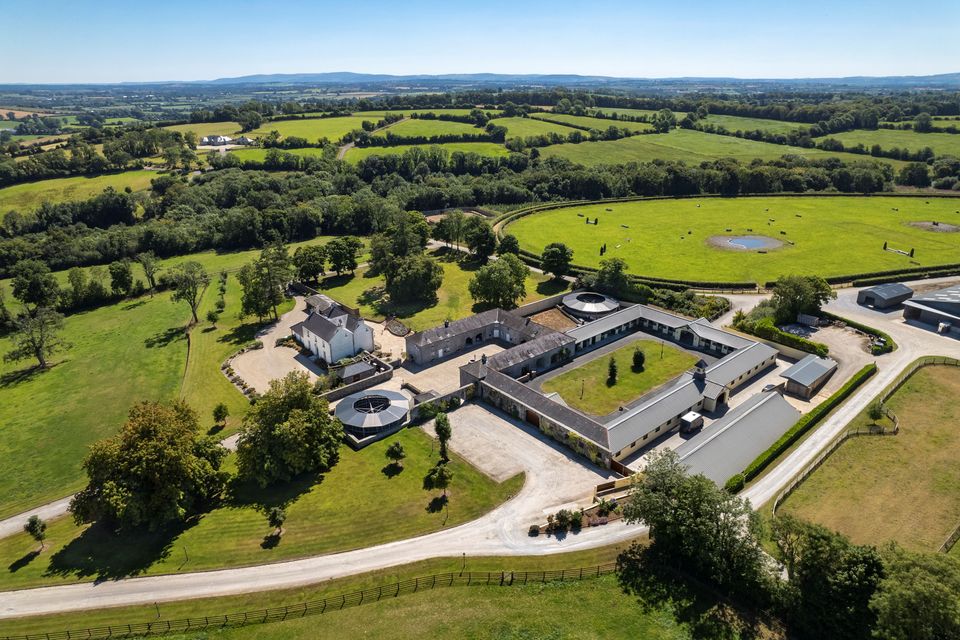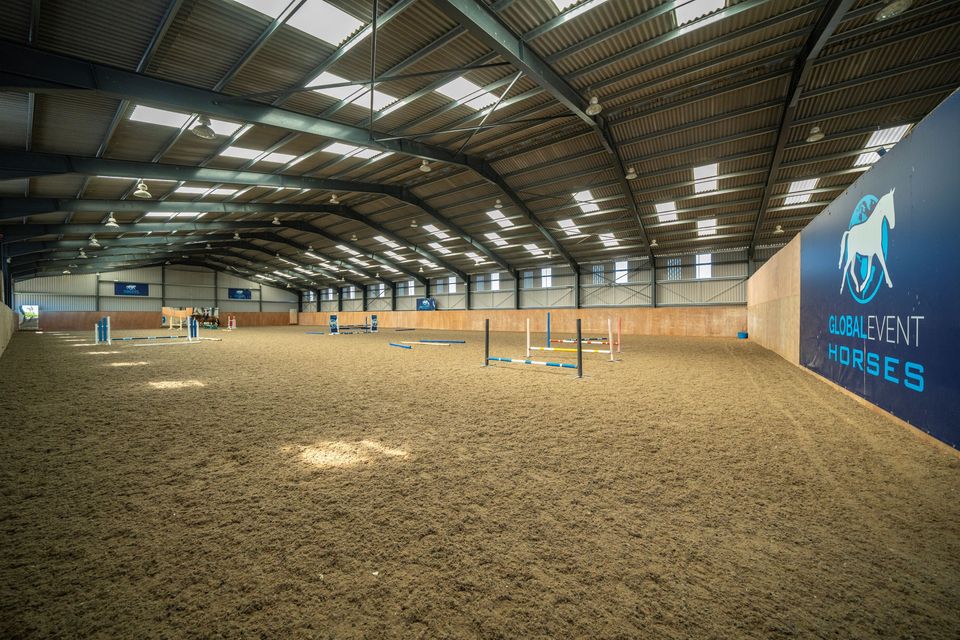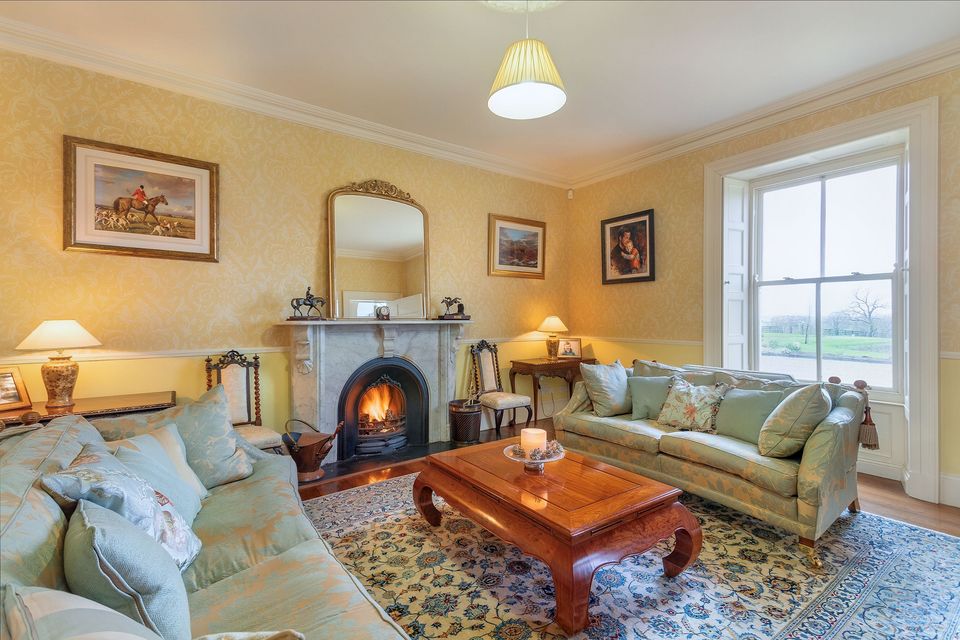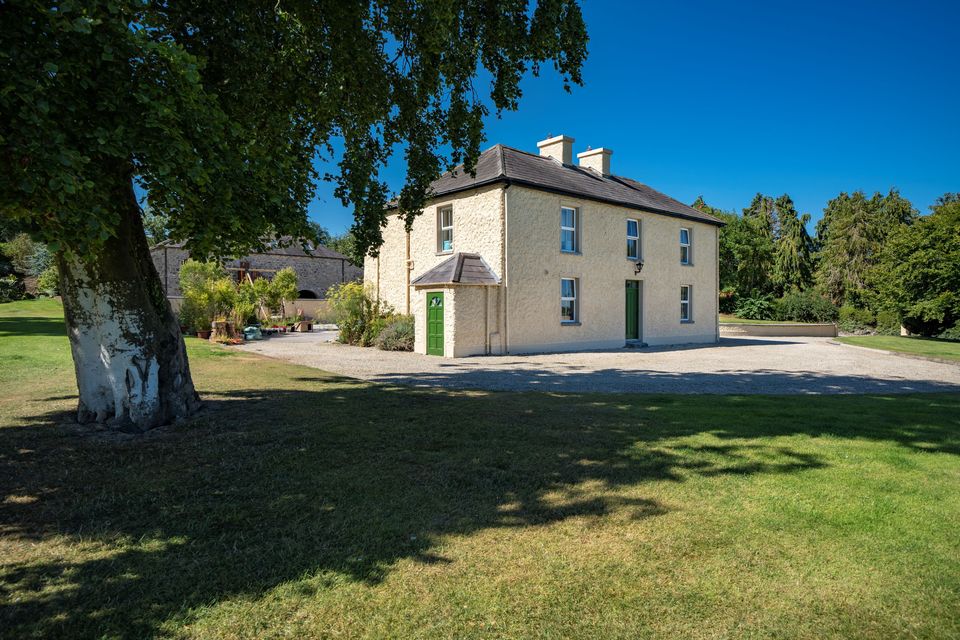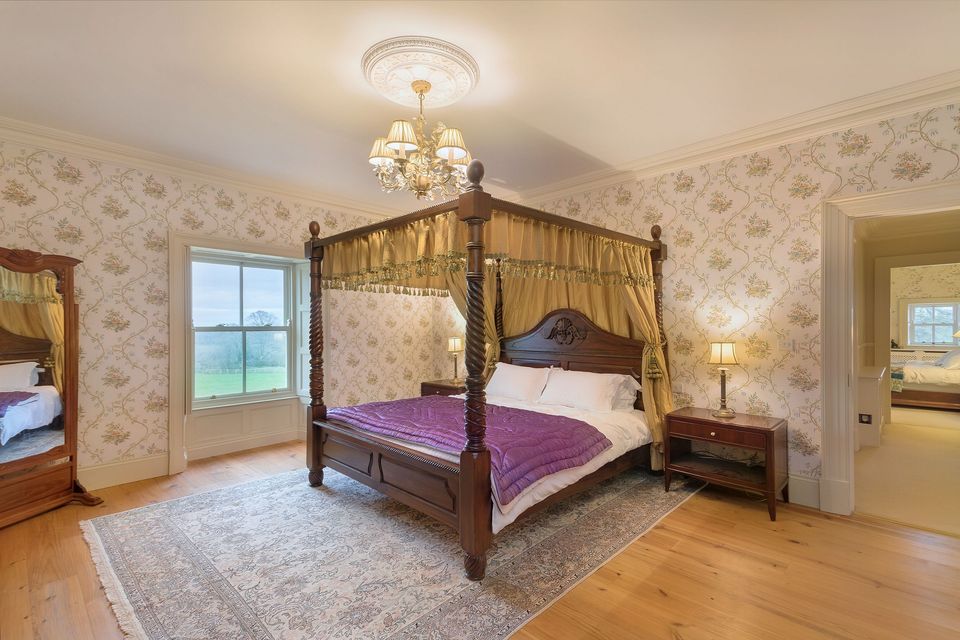Sports
Retired Gold Cup and Grand National-winning jockey Jim Culloty is selling his €4.5m home and equestrian training centre
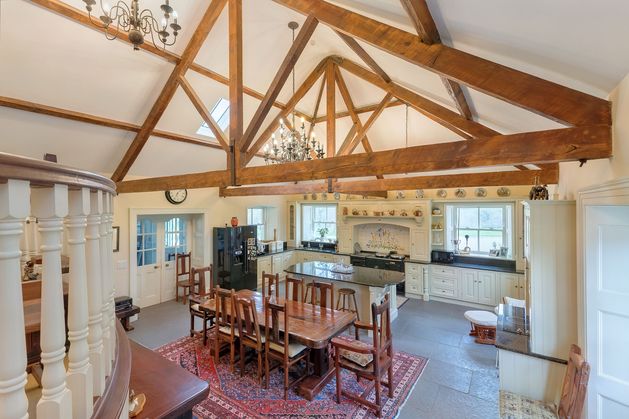
Horseracing star’s Mallow house comes with indoor school where he trained 2014 Gold Cup winner Lord Windermere
Asking price: €4.5m
Agent: Sherry FitzGerald Country (01) 2376402 and Sherry FitzGerald Walsh (063) 30884
Sometimes everyone needs to take a punt. This is true even for a Cheltenham Gold Cup and Grand National winner like the famous jockey and trainer Jim Culloty. As a young man at the turn of the millennium, he put his money down on a sprawling, careworn property near Mallow in Cork and over the years, he has turned it into a prize home with one of the country’s finest bloodstock schools attached.
Jim Culloty with his four Gold Cups at Mount Corbitt House. Photo: Healy Racing/Racingfotos.com
Culloty turned professional as a jockey after riding 46 winners in one year as an amateur in 1996. He had great success in the following four years or so as a pro based in the UK. In all, he has won almost 400 races. The retired National Hunt jockey also won both the Cheltenham Gold Cup and Grand National in the same season.
“I was getting a bit homesick and wanted to go back to Ireland,” he says. “I went home one weekend and saw it in the paper. The price had been reduced, so I had a look. The house was in the middle of all this land and it was beautiful. In my naivety, I bought it. I thought I would do it up bit by bit. In the end, after I got married, we went a bit mad and decided to spend a fortune on it.”
An aewrial view of the house and equestrian facilities
Culloty didn’t just refurbish a house, he built on a vast network of equine service buildings with loose boxes on just under 200 acres, including a training facility with accommodation for over 50 horses.
Today, Corbitt comes with a five-furlong carpet fibre hill gallop, a four-furlong sand round gallop, an extensive schooling ground, which includes logs, easy fix hurdles and easy fix fences, and indoor school, which is used mostly over the winter. And it is here that Culloty trained the 2014 Gold Cup winner Lord Windermere, adding another as a trainer to his existing three as a jockey.
The training arena
“The house is situated on the highest part of the site and everything about is facing the right way,” he says. “It is surrounded by mature trees and even though you can see over them, the house cannot be seen. It is hard to appreciate how quiet it is, even though it is really close to Mallow.
“After my circumstances changed in and around 2015 (his marriage to wife Susie ended), I moved back to the UK and I kept Corbitt on as a holiday home, but then the pandemic came along and I just stopped coming over.
One of the receptions
“It breaks my heart to sell it, but my kids are not interested. They have grown up British and all of their friends and interests are there. If it was in Killarney, where I am from, I would keep it, but it is just that bit too far from there.”
The newest part of the house itself is Georgian, and portions may go right back to the 16th century. It was also the birthplace of Robert A. Anderson, who helped found Ireland’s co-operative farm movement. Anderson was born here in 1860 and began working as a petty sessions clerk at Doneraile and later became sub-agent to the local landowner, Lord Castletown. In 1889, he met Horace Plunkett and joined him in promoting agricultural cooperatives in Munster.
The exterior of the house
Culloty stripped the interiors of the protected structure almost back to its shell, paying close attention to its heritage and putting the period features back as best as he could. Today, there is roughly 5,000 sq ft over four floors. The living room, which overlooks the front gardens, has an open fire and large sash windows with shutters. The large dining room is similar and has a large open fire and panelled walls. A connecting hallway leads to another, less formal, living room. There is also a games room on this floor. To the rear of the property is a wooden porch.
The kitchen/dining room is a large open-plan space with a split-level area, exposed beams, chandeliers and a double staircase to a mezzanine floor.
The kitchen has a large island, an Aga and French doors opening to a terrace with views over the gardens and grounds. There is a guest WC, utility, basement level laundry room and a boot room with access to the rear terrace. The first floor houses the main bedroom and its en-suite bathroom, as well as three further bedrooms, which also have en suites. There are a further three bedrooms and one bathroom on the second floor.
In the courtyard are two additional dwellings, Rose Cottage and Lavender Cottage, both of which have two bedrooms. Beside these are six large stables and adjacent, there’s a large archway leading to the main stable yard with offices and a bar area.
One of the bedrooms
There is a further detached, Georgian-style property called Ballygrace, which has a separate entrance from the road and three bedrooms (two en suite). This was previously used to house equestrian staff and has been rented out in more recent years.
Now largely retired, Culloty is at pains to stress just how autonomous the property itself is as a whole. “It is absolutely self-sufficient,” he says. “You have your staff accommodation for the horse industry and you can grow your own hay. Plus you have a vegetable garden and a water supply for the people. If you could produce your own electricity, you would actually never ever have to leave the place.
“I occasionally dabble these days. Obviously, I would love to keep a hand in at Mount Corbitt — I still love horses and racing — but it would become merely a very expensive hobby and my kids are more important. They come first.”
Mount Corbitt is unlikely to see a large field competing for this prize turf, but it will surely attract a small group of financial thorougbreds into the stalls who are capable of jumping the requisite financial hurdles and fancy its €4.5m starting price. Sherry FitzGerald Country and Sherry FitzGerald Walsh are acting for Jim Culloty.

